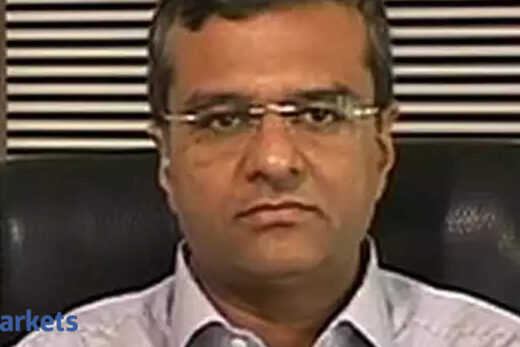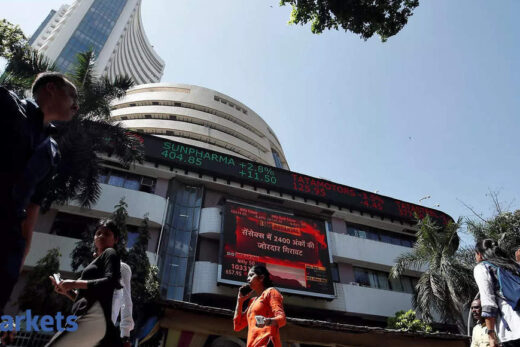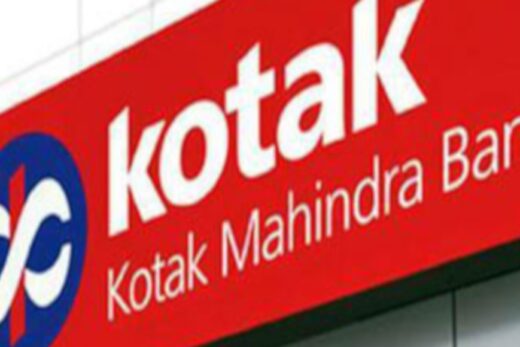Let us understand what you have done differently that on a relative basis you did not feel the heat of the second wave.
Yes, I agree. I think if you look on a relative basis, our retail businesses have performed well and if you look at our retail basis which is 55% of our book, 43% of our book comes from domain specialisations. These domains are in vehicle finance as well as in micro finance. On the vehicle finance business, I think we have always been better. This is a business which is 30 years old with us. I think we have seen differentiated cycles.
There was restructuring which was done in this book. We took a restructuring of Rs 3,000 crore in this book and we took a credit loss of almost about Rs 1,000 crore over two quarters in this book. We have taken and upfronted the losses and if you look at this quarter also, we had Rs 600 crore of gross outflow. But we also had a recovery of about Rs 150 crore on that book. So I think we have been able to manage the vehicle finance.
I think the part of vehicle finance which is under stress is in the three-wheeler segment and in the medium and heavy commercial vehicle, where our exposure of the total book is about 30%. The rest of the book which is tractors, personal vehicle, as well have done very well for us. On the microfinance, the strength of microfinance is a very well diversified book and it is a contact business. If you are able to do the contact, the efficiencies come in. And I think being diversified and being a contract business, we had a Rs 640 crore outflow, but we were able to recoup about Rs 400 crore.
We have also reinitiated the Rs 500 crore of restructuring which will happen in this quarter on that book, but otherwise we are well on our way. I think these two businesses should perform well. Trucks are already on the road. Vehicle finance is doing well. States have opened up except for three states where I think there is a lack of opening up which is Kerala, West Bengal and Karnataka, which has started opening up. I think the business is doing relatively well.
On an absolute basis, if you are indicating to a growth which is significantly higher than others, is this largely because of your low base or are you confident of growth coming back?
There are both the factors. I think the economy is looking up. We never expected a rebound in July in the way it has happened. It will be reflected once the data starts coming in. I think vehicle sales are back. We are seeing MFI demand coming up. We are seeing demand from the corporate coming up. So, I think the demand is back as far as July is concerned. I hope it plays out and we do not have a COVID third wave which is as strong as the second wave which happened.
On the growth part, you are absolutely right. We are coming from a very small base. Last year the growth was just 6% and if you look at our year-on-year growth, it had just been a very small number. If you look at where the growth will come up and vectors of growth, it will come from vehicle finance; specifically, the diversified portfolio which we have. I think that is where the growth will come up. The growth will come from our microfinance business, not that much, but it will come at about 10% to 12% on our microfinance.
The corporate business for the first time started seeing growth. We were selling down the portfolio last year, so we had a degrowth in the corporate bank, but we are now seeing the growth coming back in the corporate bank, the SME business, and the MSME business which we had not grown over the last one year. We were very cautious, but we see the growth coming back. We have given an indication of 16% to 18% growth, which translates to about Rs 30,000 crore growth in three quarters and we should be able to manage that.
In order to manage this kind of growth, will you be taking high risk?
You have to look at it differently. Where did our pain come from? The pain came from large corporates and specifically five corporates which I do not want to repeat, but it has just happened and we took extraordinary exposure in those five. They were holding promoter company exposures which we took. I think we have learnt our lessons very well and if you look at the corporate growth, will continue to be benchmarked to the market.
If you look at our growth, most of our growth is happening in A-rated paper and above, and our duration is shorter and our ticket sizes have become very short in that. So, we are more focussed on the working capital. The vehicle finance, microfinance business or diamond, which are our three domains, gave us the growth, and never gave us a problem. In those three domains we have a market share of 15% and I do not believe those are the domains which will give us problems and growth is coming from that.
Our growth will also come from the MSME segment where we have a 2.1 market share. We want to go to 6% market share over a period of planning cycle five and the growth will come in SMEs where we have opened a new segment which is between Rs 100 and Rs 500 crore, where our book is very small. So, we are focussed on these two.
We have also added some accelerators into our growth and those accelerators are the merchant acquiring business which is an offshoot of the Bharat Financial business where we believe across the spectrum of the country – urban or rural, as well as in the semi-urban – we want to do merchant acquiring. We already have two lakh merchants which we have acquired under this. We have a Rs 400 crore book.
This year we should end up at about Rs 1,500 to 2,000. Next year it should be a Rs 4,000 crore book. It is a book which gives us 23% yield and is government credit guaranteed up to 60%. If you look at the other book which is affordable housing, we have been slowly growing it. We are sitting on Rs 1,800 crore. The clients are with us and it is a cross sell into our client base and we believe that we can create another Rs 6,000 crore of book in the next two years.
So, growth is coming from existing businesses as well as new verticals which we have added. We have not grown our unsecured book. So, the unsecured book which is credit cards is less than 5% and is at least 3.5% of our book. We do not believe that we will continue to grow that book. We are very focussed on calibrated growth and on making sure that the risk density of our growth remains range bound.
Where is your credit cost, what has happened to the liability franchise and where do you see ROA settling?
So let me answer the reversal and I think that is a very important question. Where I came in there were two issues on the balance sheet and both the sides of the balance sheet had an issue. So, we had a liability side of the issue and we have an asset side of an issue. On the liability side we have really worked very hard and the results are there for everybody to see. We have grown our liability business by 26% year on year.
We have grown the CASA by 33% year on year and the retail deposits most importantly by 57% year on year. What is more important is as per BASEL III norms which in public figure was 29% for us, has moved up to 40-41%. That was a big jump which we have expected. Number two, if you look at our net interest margin, we have been rangebound on our net interest margin. We were lower this quarter at 4.06, otherwise we have been in range bound between 4.15 to 4.25.
We have always said that we will continue to be range bound, we will not grow that. However, we had excess liquidity of 54,000 in our books today and as a consequence we lost out on our NIMs. It was not on the asset side of the deposit side cost of deposit, it was actually because of excess liquidity. Our PPOP margins at 6% are amongst the highest in the industry and if you look at the overall asset it is about 3.67%, which is almost highest in the industry.
We believe that because of the portfolios which we have we will be able to maintain our PPOP margins. Given that the PPOP margins we have are very high, our ability to absorb shocks of this nature was there. Of course, our ROA has suffered, but if you see the normalisation of credit cost happening, we have taken upfront provisions a lot. We carry Rs 2,050 crore of excess provisions is in our book and also we are 72% PCR.
We should be able to normalise the credit cost between 160 to 190 bps this year and you can compute the ROA as a consequence of that. We believe that our ROA at certain point, once our credit cost normalises, should be in the range of 1.7 to 2% at any point of time.
Are you likely to go back to corporate expansion mode which is what you followed in 2014 and 2018 because that changes the complete DNA and approach of the bank?
See to say our corporate franchise was wrong I think will be very incorrect. I think our corporate franchise did very well with what the issue was between 2017 and 2018. We took some exposures which was higher than what our balance sheet could have taken and unfortunately those went wrong. I agree with that and we have already admitted to that, but to say we will not grow our corporate franchise will be incorrect. We have a very good products, we have a very good team and we have marquee relationships with us and if we balance the working capital and the term loan and capabilities, and we do the corporate bank right, I think it will contribute to may be 42% to 45% of our assets.
I think the retail side of our balance sheet and the MSME side of the balance sheet will be around 55% to 58% of our balance sheet and that is where we have domain specialisations of a very different nature and we will grow that. In addition there are two new vectors which have been added. One is the micro finance the merchant acquiring and the other is the affordable housing to take care of it. We are also cautious that we need to ad afford domina. We are evaluating afford domain and I think we will add afford domain which will give us specific lift to the balance sheet over the next two years.
We are not changing our packs. We have become more conservative and prudent in the way we do underwriting in the corporate side where our domain specialisations are. We will continue to maintain market share and we are adding new domains to make sure that we keep ahead of the pace. A lot of people say large banks will consolidate and large banks will survive. I tend to agree, we are large banks in the three domain and if we are adding a fourth domain, we will continue to be a large bank. We are different in that nature from the other banks. Our domains are what gives us the growth and value creation.



